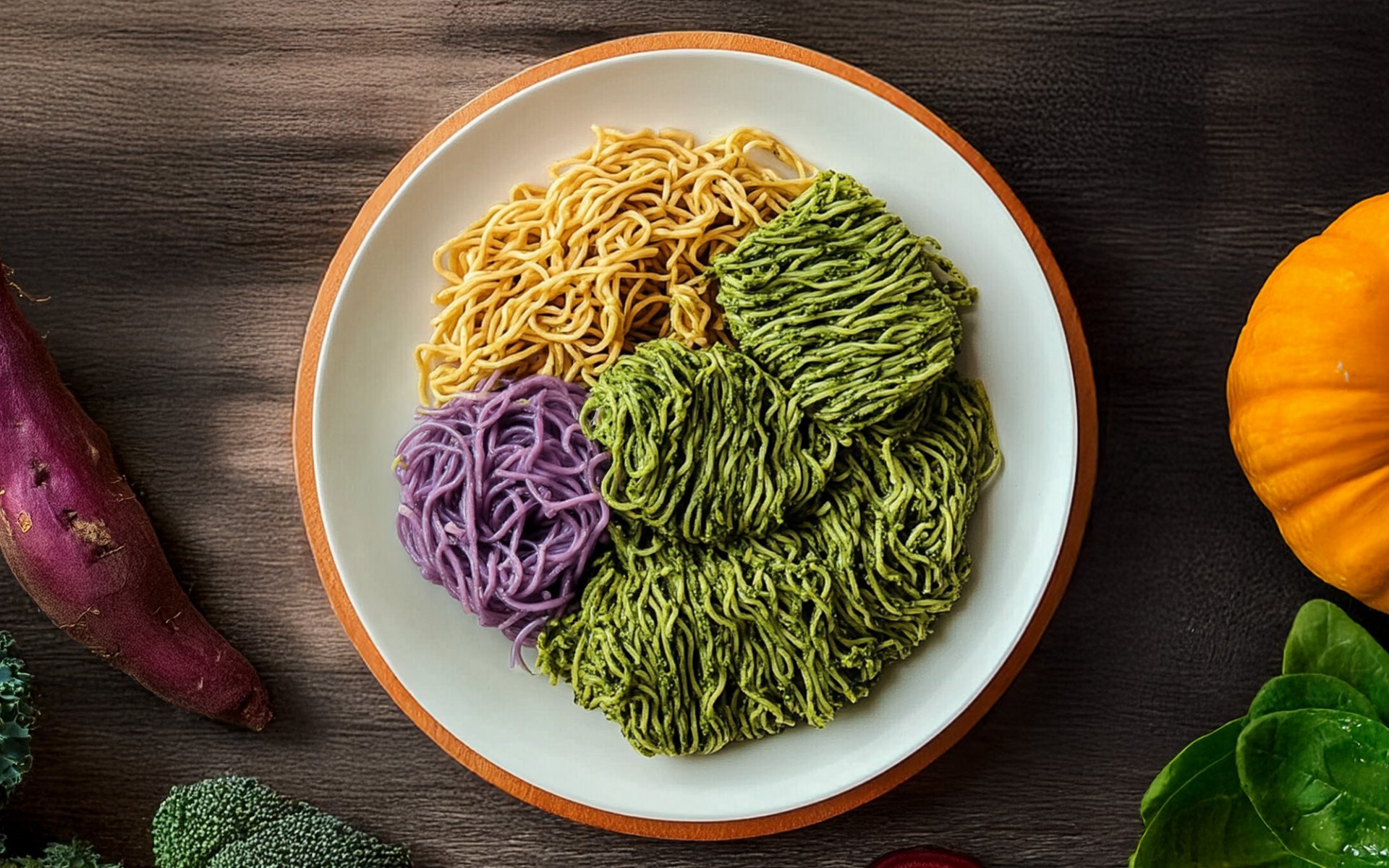Vegetarian Noodle

Veganism and Vegetarianism: A Long History in Human Civilization
The concept of consuming a vegetarian diet is not a recent trend; it boasts a long history dating back to the Bronze Age (3300 to 1300 BCE). Historical records indicate that some communities in the Indus Valley Civilization chose to abstain from meat for religious and spiritual reasons. This concept later spread to Asian countries, especially China and India, where both Buddhism and Hinduism advocate for abstinence from meat.
Meanwhile, noodles, a staple food in many cultures, originated in China approximately 4,000 years ago, with the discovery of millet noodles in northwestern China. The culture of noodle consumption subsequently spread to other Asian and European countries.
Buddhism's Role in Spreading Vegetarian Noodles in China
China is a country where vegetarian and vegan diets are widely practiced, largely because most Chinese people are followers of Buddhism. Buddhist temples in China have played a crucial role in promoting vegetarian food. Monks and nuns prepare dishes made from vegetables, grains, and tofu as food for themselves and for devotees who visit the temples for merit-making. These dishes have been carefully conceived and developed to be delicious and diverse.
During the Tang Dynasty (618-907 CE), Buddhism flourished significantly in China, leading to increased popularity of vegetarian food. This meant that the preparation of vegetarian meals was no longer confined to temples but became widespread among Buddhist followers. Typically, Chinese people consume vegetarian food during the Nine Emperor Gods Festival (a nine-day tradition in the ninth lunar month of the Chinese calendar), and vegetarian noodles are a popular and easily accessible dish during this period.
The Expansion of Vegetarian Noodles in Asia and the West
In the late 19th century, noodles were introduced to Japan by Chinese laborers and students. They later evolved into "ramen" and various other noodle forms. Initially, Japanese noodles often contained eggs as a primary ingredient, as eggs helped the noodles achieve flexibility, chewiness, and a richer flavor. However, vegetarian recipes were later developed to cater to a more diverse consumer base.
In Thailand, the consumption of vegetarian noodles originated from the "Jay" or vegetarian festival culture of Thai-Chinese communities, which is widely observed during the Nine Emperor Gods Festival. Popular dishes include Pad Thai Jay, Vegetarian Noodles (Kuay Teow Jay), and Pad Mee Sua Jay.
In Europe and the United States, the consumption of vegetarian and vegan foods has seen a significant rise in popularity over the past few decades. This trend is evident in the development of official vegetarian food standards and labels, such as the Vegan or Vegetarian symbols on pasta packaging.
Factors Driving the Current Popularity of Vegetarian Noodles
While initially, vegetarian noodles were primarily popular among those who strictly followed a vegetarian diet, they have since gained continuous popularity among a wider consumer base as people become more conscious of health and environmental well-being. This significant shift is driven by several interconnected factors related to health awareness and environmental concerns:
- Health Concerns: Consumers are increasingly aware of and avoiding meat consumption due to potential residues like antibiotics and hormones. Furthermore, individuals with digestive issues or meat allergies are turning to plant-based foods, as they can provide complete nutritional value, including protein, iron, essential fatty acids, and Vitamin B12.
- Improved Product Development and Meat-Like Flavors: Thanks to advanced Plant-Based food production technology, proteins from soy, yeast, and even 3D-printing techniques are now used to create remarkably meat-like textures and flavors in alternative meat products. This ensures that consumers don't feel like they are missing out on deliciousness while still receiving complete nutrition.
- Eco-Friendly and Sustainability Trends: Consumer groups, especially younger generations, are increasingly concerned about the environmental impact of animal agriculture. They are actively supporting foods produced through eco-friendly processes, such as vegetarian noodles, which reduce resource consumption and greenhouse gas emissions.
- Widespread Acceptance and Support from the Food Industry: Fine-dining restaurants, including Michelin-starred establishments in many countries (Thailand included), are beginning to incorporate Plant-Based and Vegan menus into their main offerings. This promotes the perception that vegetarian food is a modern, delicious, and healthy choice.
- Research Data and Health Awareness: Research from leading health organizations, such as the World Cancer Research Fund, indicates that reducing or eliminating meat consumption helps lower the risk of cancer, diabetes, high blood pressure, and heart disease. This scientific backing encourages consumers to increasingly opt for plant-based foods.
- Plant-Based and Flexitarian Eating Trends: A significant number of consumers are adopting plant-centric diets (Plant-Based) or identifying as Flexitarians, who still consume animal products occasionally but actively strive to reduce their meat intake. This has fueled the rapid growth of the vegetarian noodle market, catering to the demand for healthy and convenient food options.
Differences Between Regular and Vegetarian Noodles
Regular noodles typically contain eggs as a primary ingredient, in addition to flour and water. Some recipes may also use alkaline water or other additives. For instant noodles, flavor packets or oils derived from animal products may also be present.
In contrast, vegetarian noodles contain no eggs or any other animal-derived ingredients whatsoever, including dairy products, animal-based gelatin, or even bone broths that might be found in instant noodle seasoning packets. Pure vegetarian noodles use 100% plant-based ingredients. The colors in these noodles come from various natural sources, such as natural pigments from starches, alkaline water, and colors from vegetables and fruits. For example:
- Green: Often derived from spinach, kale, collard greens, and pandan leaves.
- Orange or Yellow: Typically obtained from pumpkin and carrots.
- Purple or Purplish-Red: Often from beetroot and purple sweet potato.


